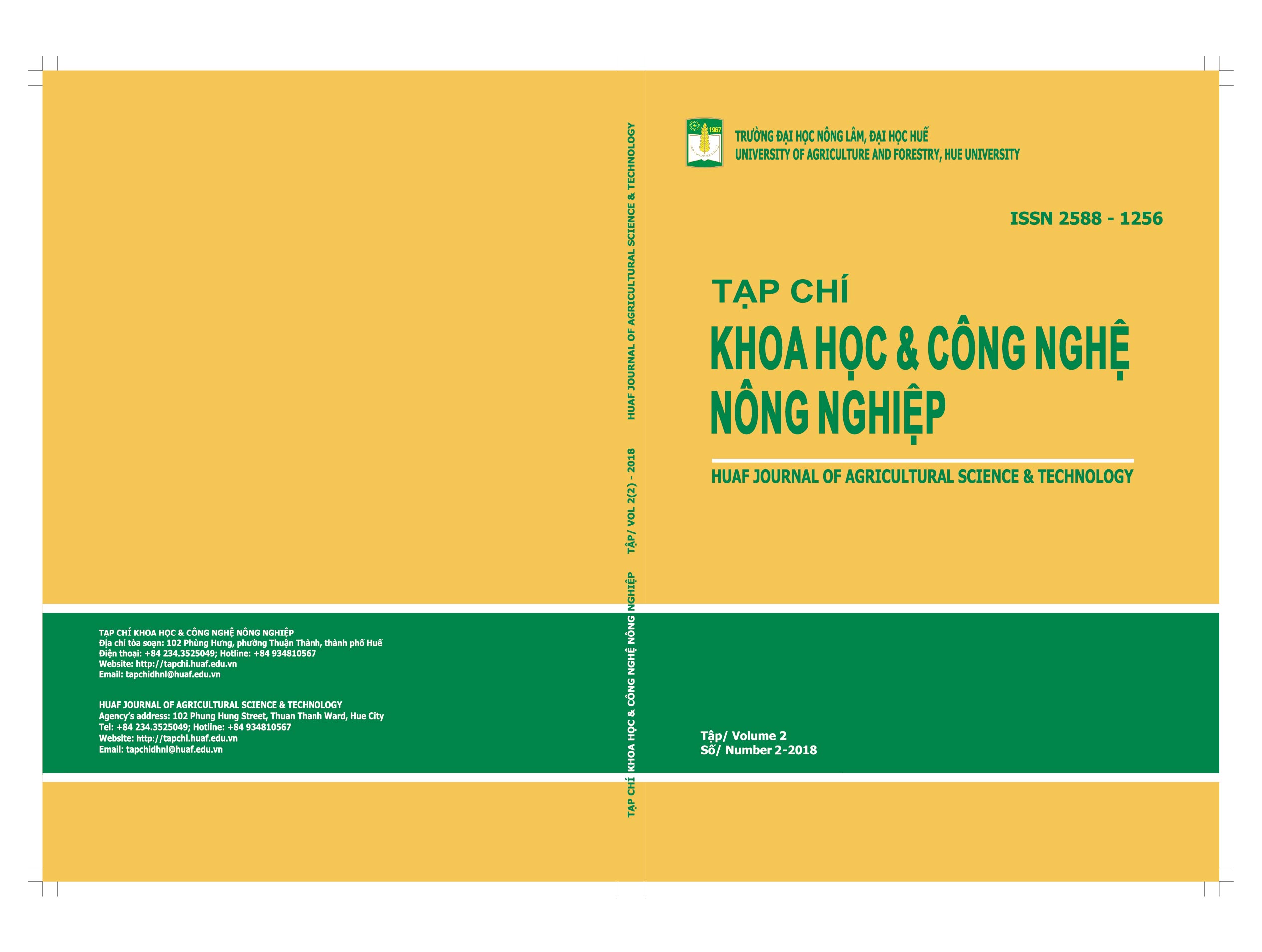##plugins.themes.huaf_theme.article.main##
Tóm tắt
Lọc sinh học được biết đến là một phương pháp xử lý nước thải có chi phí thấp và hiệu quả để xử lý tại chỗ nơi nước thải phát sinh. Mục tiêu của nghiên cứu này nhằm đánh giá hiệu quả xử lý của hệ thống lọc sinh học sử dụng xỉ than tổ ong làm vật liệu đệm để xử lý nước thải sinh hoạt với qui mô nhỏ. Thí nghiệm được thực hiện trên mô hình sử dụng ống PVC làm cột lọc. Nước thải được nạp liên tục với tải trọng thủy lực lần lượt là 2,4 m3/m2/ngày, 4,8 m3/m2/ngày và 7,2 m3/m2/ngày. Sau khi kết thúc thí nghiệm, vật liệu đệm được thu lại để xác định mức độ hoạt động của vi sinh vật phát triển trong lớp vật liệu lọc. Kết quả nghiên cứu cho thấy nồng độ chất ô nhiễm trong nước thải sau xử lý thấp và đạt QCVN 14:2008/BTNMT. Hiệu suất xử lý SS, BOD5, TKN, và TP cao nhất đạt lần lượt là 88,4%, 93,9%, 85,8%, và 68,4%, đối với cột lọc sử dụng xỉ than. Cột lọc sử dụng xỉ than làm vật liệu đệm cũng loại bỏ tổng lượng vi khuẩn đường ruột từ 2,2 đến 2,9 log đơn vị. Bên cạnh đó, hiệu quả xử lý khi sử dụng xỉ than làm vật liệu đệm cao hơn so với vật liệu sỏi truyền thống. Hoạt động của vi sinh vật phát triển trong cột lọc xỉ than cao hơn cột lọc sỏi. Qua nghiên cứu này cho thấy xỉ than tổ ong có thể tái sử dụng làm vật liệu đệm trong hệ thống lọc sinh học để nâng cao hiệu quả xử lý các chất ô nhiễm trong nước thải sinh hoạt.
ABSTRACT
The biofilter is known as an effective and low-cost treatment method for on-site treatment of wastewater. The objective of this study is to assess the treatment efficiency of a bench scale biofilter system using beehive charcoal residue as the packing material to treat domestic wastewater. The system was constructed by using the PVC tube for filter columns. The filter columns were continuously fed with hydraulic loading rates of 2.4 m3/m2/day, 4.8 m3/m2/day và 7.2 m3/m2/day. At the end of the experiments, the packing materials were collected to investigate the activitites activities of microbes developing on the media surfaces. The experimental results showed that the effluent concentrations of contaminants were low and met the National Technical Regulation on Domestic Wastewater (QCVN 14:2008/BTNMT). The removal efficiencies of suspended solids (SS), chemical oxygen demand (COD), biochemical oxygen demand (BOD5), Total Kjeldahl Nitrogen (TKN), and total phosphorus (TP) in filter columns packed with beehive charcoal residues were 88.4%, 93.9%, 85.8%, and 68.4%, respectively. The filter columns packed with beehive charcoal residues also removed total coliform from 2.2 to 2.9 log unit. In addition, the biofilters filled with beehive charcoal combustion residue performed better than that packed with fine gravel. The level of microbial activities in the filter columns packed with beehive charcoal combustion residue was higher than that packed with fine gravel. Ultimately, this study pointed out that beehive charcoal combustion residue could be reused for packing material in filter columns to enhance removal efficiencies of contaminants in domestic wastewater.


